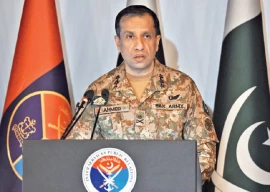
The International Development Association (IDA) - the World Bank’s concessionary loans arm - disbursed $520.6 million to Pakistan in fiscal year 2017-18, according to data compiled by the Economic Affairs Division. The amount was about 54% of the authorities’ estimate of $968 million. IDA loans are given to poor-income countries for a longer period at nominal interest rates of around 1.25%.
In comparison, disbursements by the International Bank for Reconstruction and Development (IBRD) stood at $249 million against the budgeted estimate of $68 million. The IBRD, another concessionary loan arm of the World Bank, extends its loans on commercial terms to the middle-income countries, at six-month floating London Interbank Offered Rate (Libor). Pakistan receives a combination of IDA and IBRD loans every year.
World Bank approves $728m for four environment projects
Developing countries vie to avail their concessionary loan quotas due to low interest rates and repayments spanning over a period of at least 38 years. There are also some non-concessional IDA loans doled out to the projects entailing high rate of returns.
However, instead of availing cheap financing, Pakistani authorities focused on receiving loans from foreign commercial banks to finance its current account deficit. Against the budgeted estimates of $1.5 billion, Pakistan received loans worth $3.7 billion from foreign commercial banks for a maximum period of three years, at interest rate of Libor plus 3%.
For fiscal year 2017-18, Pakistan had estimated that the international lending institution would disburse $1.03 billion loans, which includes concessionary loans of $968 million and commercial loans of $68 million. However, actual disbursements remained at three-fourths of the estimates, despite some projects receiving significantly higher than the projected financing.
Payment of commitment charges on an undisbursed, but approved loan amount has remained a big issue for Pakistan. The projects in all sectors have been facing delays due to administrative bottlenecks and delay in award of contracts. Lenders also take more than the required time in scrutiny and finalisation of contractual documents.
Majority of the World Bank-funded projects are in Punjab and Sindh and some are administered by the federal government. Out of $249-million IBRD disbursement, Punjab received $141 million against four projects. The Washington-based lender disbursed $62.4 million for Punjab education sector reforms project, $20 million for Punjab jobs and competitiveness project, $14.8 million for Punjab irrigation project and $43.7 million for Punjab agriculture transformation project.
The lender also disbursed $132.2 million for Tarbela’s 4th extension scheme.
However, majority of the social sector schemes that are largely funded from the IDA received small amounts in the last fiscal year. Over 40% of the IDA funding or $213 million went to only three projects. Pakistan financial inclusion and infrastructure project received $75.2 million, the public finance management and support project $80 million and housing finance project $58 million. These projects are administered by the finance ministry.
The rest of the funding was given to over two-dozen schemes, which suggested that these projects were not showing significant progress. Some of these projects have already been declared problematic, like the water sector capacity building project.
World Bank asks Pakistan to accept Indian proposal
The tertiary education support project received a paltry sum of $1.8 million, Sindh skills development project received $1.63 million, Punjab health sector reforms project ($15.4 million), Punjab public management project ($8 million), the nutrition scheme ($13.8 million), Punjab skills development scheme ($6.2 million) and national immunisation support project ($4.7 million).
The water sector capacity building project received less than $1 million financing.
On the other hand, Sindh agriculture growth project received only $16.3 million, Sindh irrigation production scheme received $23 million funding and Sindh barrages improvement project received $12.4 million. Whereas, Balochistan integrated water sector management project received $2.8 million loan in the last fiscal year.
Published in The Express Tribune, July 26th, 2018.
Like Business on Facebook, follow @TribuneBiz on Twitter to stay informed and join in the conversation.
1736938320-0/BeFunky-collage-(52)1736938320-0-405x300.webp)

1736235029-0/diddy-(50)1736235029-0-165x106.webp)
1736930668-0/Untitled-design-(97)1736930668-0-165x106.webp)
1736931444-0/BeFunky-collage-(51)1736931444-0-165x106.webp)

1736941269-0/sidra--(9)1736941269-0-270x192.webp)




1732012115-0/Untitled-design-(14)1732012115-0-270x192.webp)
1736844405-0/Express-Tribune-(2)1736844405-0-270x192.webp)










COMMENTS (1)
Comments are moderated and generally will be posted if they are on-topic and not abusive.
For more information, please see our Comments FAQ